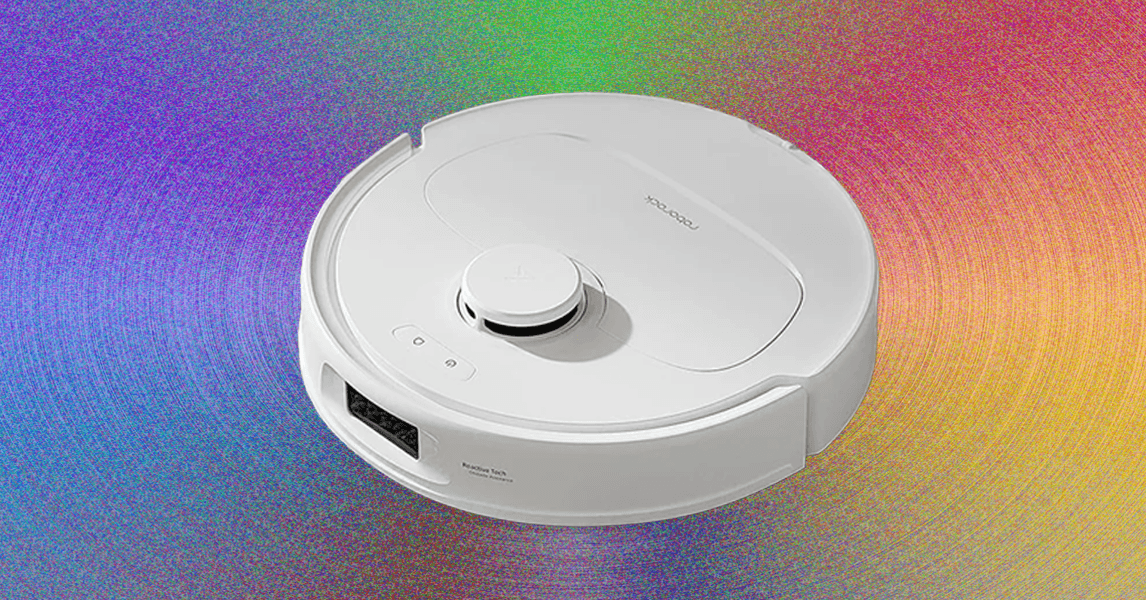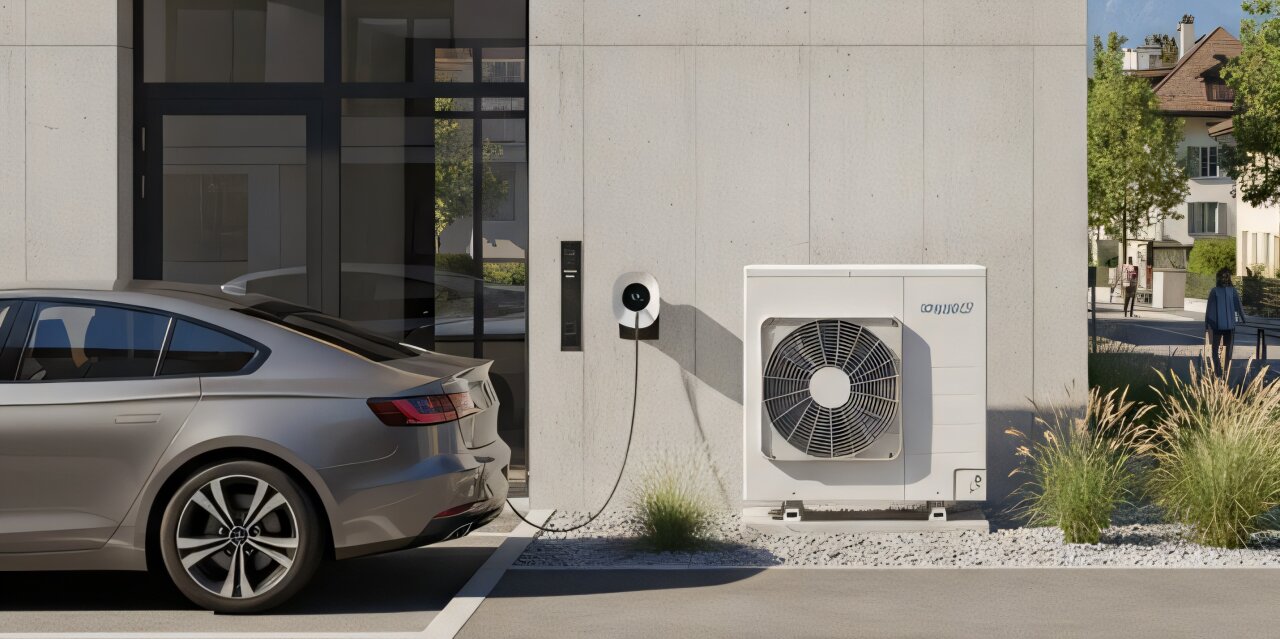Tech
I’ve Reviewed Robot Vacuums for 8 Years. These Ones Actually Work

Compare Top 9 Robot Vacuums
Other Robot Vacuums to Consider
Photograph: Adrienne So
We are approaching the great robot vacuum convergence. At whatever price you want to pay, you can find a robot vacuum that will look very similar and have similar features. Here are a few that also worked well for us.
Roborock Qrevo Curv for $1,099: This was Roborock’s 2024 flagship vacuum, and it’s still great (reviewer Ryan Waniata calls it the best robot vacuum he’s ever used). It has slightly less suction power than this year’s Saros 10R, but I did use it to clean an entire carpet full of baking powder. We are waiting for Roborock to release the Qrevo Curv line into the North American market for 2025.
Tapo TP-Link RV20 Max for $200: This is a perfectly fine, slim, basic robot vacuum that was our most affordable pick for most of the year. However, I’ve had it running in my living room for long-term testing and I am becoming a little exasperated by how often it gets knocked off the dock and runs out of battery.
Eufy Mach S1 Pro for $950: This astoundingly beautiful robot vacuum will be the centerpiece of your kitchen. The water chamber is see-through and lights up, and an ozone generator purportedly removes up to 99.99 percent of bacteria. It also has ultra-precise navigation and a self-cleaning roller mop that washes itself as it cleans. However, it only has 8,000 Pa suction, which is less than some of our other picks, and at 26.4 inches high, the dock is very tall and makes storage difficult.
Eufy X10 Pro Omni for $550: Believe it or not, this is not a bad price for a hybrid robot vacuum mop (9/10, WIRED Recommends) with such fantastic navigational capabilities! (Sales have brought it even lower.) However, the Yeedi above is cheaper and offers mostly the same functionality.
Avoid These Robot Vacuums
Not every vacuum earns a spot on our list. These are the ones I repacked straightaway.
Mova P50 Pro Ultra Robot Vacuum for $799: This robot vacuum features a staggering 19,000 Pa of suction and a wide array of high-end features, like an extendable side brush and an intelligent dirt detection system. Reviewer Molly Higgins appreciated that it’s self-cleaning and that the bin auto-empties, but she found that, despite its smart systems, the mapping was not accurate, small obstacles often threw it off, and the vacuum eventually started avoiding rooms altogether.
Eufy E28 Combo Robot Vacuum for $983: I was super disappointed by this, since I have two dogs and two kids and frequently need to use a deep carpet cleaner, in addition to a mop and vacuum. This vacuum can mop and has a detachable carpet cleaning station. Unfortunately, the water injection system is wonky. The robot vacuum has to be perfectly positioned to get injected with water from the tank (I often had to tap it into place with my foot), and every time I mopped, it leaked all over my kitchen floor. At least the carpet cleaner was effective.
iRobot Combo J7+ for $399: iRobot makes beautiful robot vacuums that I’ve liked for years, but the software experience on this one was poor when I tested it. Since then, the company has undergone many twists and turns and released a new line under a new CEO. We will update this roundup once we have tested the latest lineup.
Ecovacs Deebot T50 Max Pro Omni for $788: My tester could not make it back to the docking station. I have asked Ecovacs for another review sample and will update this once I have tested it.
TP-Link Tapo RV30C for $148: I like the simplicity of this robot vacuum, but you can’t find replacement bags for it anymore.
Eureka J20 and Eureka J15 Pro Ultra for $830: Eureka is a highly respected name in the vacuum field, and these robot vacuums are gorgeous and come with many bells and whistles. However, Eureka vacuums found the tiny lip between the hardwood floor of my kitchen to the carpet of the living room to be completely insurmountable, and the app also forgot the map every time it hit a minor obstacle. It was so annoying.
Narwal Freo X Ultra for $700: This is a beautiful vacuum with lots of features, including baseboard dusting. However, despite moving it from room to room to find better Wi-Fi, and switching from phone to phone to try different versions of the app, I was unable to connect it to the app and so could not use it. (I reached out to Narwal multiple times but could not fix it; we will update if I do find a fix in the future.)
Switchbot K10+ for $600: You can now accessorize this tiny robot vacuum with additional cleaning accessories, like a stick vacuum or air purifier. Unfortunately, the robot vacuum itself still is horrible. This is the only vacuum where I’ve ever experienced a pooptastrophe—where it dragged a dog poop all over my house. Reviewer Simon Hill also tried this robot vacuum and discovered that it’s suicidal. The roller gets clogged easily, it can’t find its way back to the dock, and it often hurls itself down the stairs.
Shark PowerDetect 2-in-1 for $1,000: This vacuum cleaned surprisingly well (5/10, WIRED Review). However, it doesn’t auto-empty, DirtDetect doesn’t work, and the app is completely bonkers (maps aren’t accurate, can’t add multiple floors, and cleaning times are off).
What Navigation System Do I Use?
Robot vacuum manufacturers will try to tell you that the most important spec is the level of suction. That is wrong—it’s the navigation system. It doesn’t matter how good a vacuum is at cleaning if it gets stuck every time it starts. A more complicated or expensive navigation system doesn’t guarantee that it won’t get stuck, but it is a good starting point. Many vacuums also combine systems.
Sensor mapping: The most inexpensive vacuums use a combination of sensors along the exterior of the vacuum, like cliff detectors on the bottom and wall detectors on the bumper, to ping-pong around your home avoiding obstacles.
Gyroscope: This is an affordable but surprisingly effective method of mapping that has been used in ships for centuries. A spinning wheel or light helps the vacuum determine its position relative to other objects in your home.
Lidar: Lidar stands for “light detection and ranging.” The vacuum uses pulsed lasers to determine how far away each object is.
Camera navigation: There’s a camera on it. Basically, the vacuum has little eyes that look around. While I’ve found this system to be extremely accurate and/or unintentionally hilarious, you must look for additional security protocols to make sure that said hilarious images of your home don’t end up on the internet.
SLAM: With SLAM navigation, or “simultaneous localization and mapping,” the vacuum uses algorithms to process a bunch of data—for example, how many times the wheels have rotated, along with camera or sensor data—to calculate where and how far it should move. It’s usually used in combination with a few, or all, of these other navigation technologies.
IMU: An inertial measurement unit is a system that combines multiple sensors like gyroscopes and accelerometers to navigate by dead reckoning.
Machine learning: Many robot vacuum manufacturers now tout their own proprietary mapping system. For example, iRobot uses a system called Imprint Smart Mapping that learns as it cleans, as does Roborock’s SmartPlan. These also usually come in combination with a camera or lasers.
Robot Vacuum Tips
Robot vacuums have a complicated task. Your home is ever-changing, and no robot vacuum will be perfect. We have a few starting points here, but if you’re still having trouble, you should check out our guide to getting the most into your robot vacuum.
Do robot vacuums work on hardwood? Yes. Many robot vacuums have different cleaning modes that will allow you to select between carpeting, tile, or other floor surfaces. If you have a combination mop-vacuum, only use the brand’s recommended liquid cleaner. Using a generic cleaner may clog your docking station.
Will my pet hate my robot vacuum? Maybe. I’ve introduced three dogs to robot vacuums with minimal problems, but if you’re nervous, you can try giving your pets treats when you turn the vacuum on for the first few times.
Stay home for your robot vacuum’s first few runs. Many homes have hot spots—a weird door jamb, a lumpy rug—where you will need to rescue your vac. Do a quick run-through beforehand for robot booby traps, like ribbons, charging cables, and pieces of string.
Check your Wi-Fi. If you have a Wi-Fi-enabled robot vacuum, most of them can only connect to the 2.4-GHz wireless band. If you’re having problems connecting, make sure you’re linking to the right band. Check out our guide to setting up your smart home for more tips.
Vacs need maintenance. Like every robot—especially one that comes in contact with the grimiest parts of your house—you need to care for it regularly. Error messages may prompt you to empty the bin mid-run, cut the hair off the rollers, or wipe off the cliff sensors. Instruction manuals and YouTube can help.
Vacuum during the day. If you have the choice, it’s usually better to schedule a run at 2 pm than at midnight, since many vacuums also use optical sensors to navigate.
Don’t throw out your hand vacuum. I hate to be a downer, but you’re probably still going to need a full-size manual vacuum once in a while. I keep a Dyson around for quick spot cleaning and vacuuming bedroom corners.
Be wary about disposable bags: Some vacuums pull dust into a disposable bag. Instead of dumping out the bin and getting dust everywhere, you just toss the bag out neatly and replace it. Unfortunately, some companies stop selling these bags altogether (looking at you, TP-Link), leaving you with a functioning robot vacuum that can’t suck up dust anywhere. Try and find information on how long parts like this will be available.
How We Test
I’ve been personally reviewing robot vacuums since 2017 and have tested well more than 100 (I have not tracked the exact number but I have reviewed one roughly every two weeks for eight years). Each WIRED gear tester sets up the vacuum in their own home, according to the manufacturer’s instructions, and in a spot with clear Wi-Fi signal. Over the course of at least two weeks, we run the vacuum every day, examining a number of factors: battery life; how well the app works; whether the map is accurate; if it consistently cleans around the edges of your home; and how well it picks up dirt of various sizes, which includes sand, lint, dog hair, Cheerios, wood chips, and flour.
We also look for mitigating factors, such as whether it’s incredibly loud or ugly, or if it fits into your kitchen at all. For a vacuum to be useful, you have to want to use it and have it around. We also noted a vacuum’s power via the manufacturer’s stated Pa, or pascals—the higher the number, the greater the suction.
Power up with unlimited access to WIRED. Get best-in-class reporting and exclusive subscriber content that’s too important to ignore. Subscribe Today.
Tech
Top HBO Max Promo Codes for November 2025

HBO Max is not just for The Sopranos anymore (but it is the only place to stream The Sopranos). Subscription video service HBO Max not only has The Sopranos, but other content from the best entertainment libraries, including: Warner Bros., Discovery Channel, CNN, Cartoon Network, Adult Swim, Animal Planet, and other brands.
We at WIRED also watch a lot of content—obviously, because we are always testing TVs, soundbars, and streaming devices—and regularly round up our newest favorites from HBO Max so that you’ll know what to watch once you nab an HBO Max promo code. Whether you’re wanting to watch an HBO original series like Succession or a smash hit movie like Barbie, HBO Max has the content you’re looking for, and WIRED has the perfect promo codes to help you save on these sometimes-pricey subscription plans.
50% Off HBO Max Promo Code for Students
Students rejoice, you don’t have to try to mooch off your friends’ parents’ HBO Max subscriptions anymore when you want to rewatch Euphoria for the 15th time (…not speaking from personal experience or anything). HBO Max is offering a Student Discount, where you can save and get 50% off subscriptions with a promo code. This means the price is only $5 a month. This discounted plan is eligible for The HBO Max Basic With Ads monthly plan, so you’ll get unlimited access to all of HBO, hit series, movies, news, sports, and more on up to two devices at once.
Save 35% by Bundling HBO Max, Disney+ and Hulu
This deal is honestly one of the best I’ve ever seen, and I’ve been thinking of switching as well, because with this Magic Bundle, you can get HBO Max, Disney+, and Hulu for just $17 a month. (which is crazy because I pay that much alone for my Hulu! Again, I’m convincing myself while writing this that I should switch to this plan.) This crazy good deal is for those three streaming services with ads, but you’ll be saving 35% on the original price. If you’re impatient like me, you can get the same deal without ads for $30 a month, which is definitely higher than with ads but you’re still saving almost $19 a month with this Evergreen deal.
HBO Max Deals: Save up to $41
Like other streaming services, HBO Max has different tiers at different prices for streaming, so you can choose which one fits you (or your “household;” wink) best. Basic with ads allows you to stream on two devices at once in full HD for $10 a month. Standard is midrange, where you get everything from the previous basic plus 30 available downloads so you can watch on the go, for $17 a month. If you are impatient and a movie/TV buff, you might want to choose the premium, where you can stream on four devices at once, have 4k Ultra HD video quality, Dolby Atmos immersive audio, and 100 downloads to watch on the go for $21 a month.
HBO Max November 2025 New Shows and Films
HBO Max is known for being one of the most heralded platforms in entertainment. These new shows and films on HBO Max are sure to be a hit too. We’re most excited for Task, a new series set in the working-class suburbs of Philadelphia, where an FBI agent heads a task force aiming to end the violent robberies led by an unsuspecting family man. There’s also a new GOT-spin off series, A Knight of the Seven Kingdoms, premiering January 18. Taking place a century before the events of Game of Thrones, set in an age when the Targaryen line still holds the Iron Throne and the last dragon has not yet passed from living memory. There’s also Chair Company from the oddball mind of Tim Robinson, and IT: Welcome to Derry, a spin off set in the IT universe for fans of horror.
Stream Sports Games for Free With Your HBO Max Subscription
As an added bonus, you can also stream live sports through the B/R Sports add-on at no extra cost. This includes super popular events from the NBA, NHL, March Madness, MLB, U.S. Soccer, Bellator, and premier cycling events. Act soon though, because after the promo period, the add-on will be available for $10 a month.
Watch Your Favorite Shows on HBO Max for Free
Because HBO knows how tempting (and sexy) teasing can be, folks can sample episodes of new and fan-favorite original steamy series, like Euphoria, Industry, or The Idol for free without a subscription. When you inevitably get hooked (too soon after the Euphoria reference?) on that sweet, sweet content, you’ll need an HBO Max subscription to stream the full library. To continue to tease, you can stream nearly endless options, like House of the Dragon from the wildly popular Game of Thrones series, Dune, and my personal faves: The Last of Us, The Penguin, and Hacks, right now. Hurry, you don’t want to miss out on the shows everyone is talking about around the proverbial water cooler.
Tech
Embee International adopts Coats Digital’s GSDCost Solution

Coats Digital is pleased to announce that leading global apparel manufacturer, Embee International Industries, has implemented Coats Digital’s GSDCost solution across its operations to eliminate inaccurate costing, streamline production processes, and boost competitiveness in international markets. The move forms a key part of Embee International’s digital transformation strategy to drive greater efficiency, improve quality, and strengthen partnerships with its portfolio of top global brands.
Embee International, a leading Egyptian apparel manufacturer, has adopted Coats Digital’s GSDCost solution to standardise work methods, ensure accurate labour costing, and boost efficiency.
The move eliminates manual costing errors, enhances production visibility, and supports its digital transformation to strengthen global competitiveness.
Headquartered in Ismailia, Egypt, with additional facilities in Suez, Port Said, and Alexandria, Embee International employs more than 12,000 people. The company operates 4,800 sewing machines across 134 sewing lines and produces approximately four million units per month. Its diverse product range includes outer jackets, trousers, chinos, denim pants, shorts, leggings, underwear, tees, polos, shirts, and soft-shell jackets.
As a trusted supplier to brands such as Decathlon, Fruit of the Loom, LC Waikiki, Walmart, Calvin Klein, Skechers, Lee Wrangler, New Yorkers, and Defacto, Embee International is committed to operational excellence, ethical manufacturing, and sustainable growth.
Prior to adopting GSDCost, Embee International relied on manual time studies using stopwatches and inconsistent measurement methods. This led to inaccurate Standard Minute Values (SMVs), incorrect costings, unrealistic production targets, lengthy negotiations with buyers, and inefficient line balancing. It also faced high production costs due to non-standardised work methods, inconsistent quality from variations in operator techniques, frequent bottlenecks and missed delivery deadlines caused by poor production visibility.
Sherwin Ricky Jonas, Head-Industrial Engineering & CI said: “GSDCost delivers a clear, data-driven view of our production processes, allowing us to measure performance accurately, standardise work methods, and optimise resource utilisation. By enhancing workforce efficiency while upholding quality and compliance standards, it fosters seamless interdepartmental coordination, streamlines operations, and drives continuous improvement through informed decision-making.”
With GSDCost, Embee International can now produce precise, data-backed labour costings that improve buyer negotiations and optimise operator methods to reduce SMVs and increase efficiency. The company is building a robust digital SMV library to accelerate new style costing and planning while improving production visibility and line balancing. This transformation is enabling Embee International to create a more agile, scalable operation capable of meeting the fast-paced demands of the global apparel market and supporting long-term growth.
Diaa Hasham, Digital Manager, Sales, Coats Digital, added: “Embee International is a leading force in global apparel manufacturing, and we are thrilled that such a prestigious company has chosen Coats Digital’s GSDCost solution to drive its digital transformation. By optimising production processes through proven, scientific methods, Embee International is strengthening the resilience and efficiency of its operations. In a market where brands demand closer collaboration with fully digitised supply chain partners, GSDCost provides a common language for manufacturers and brands alike, helping to meet cost, quality, and delivery targets while promoting sustainable and ethical practices. We look forward to supporting Embee International throughout its digital transformation journey, so it continues to benefit from improved efficiencies, enhanced profitability, and a stronger position in the global apparel industry.”
Note: The headline, insights, and image of this press release may have been refined by the Fibre2Fashion staff; the rest of the content remains unchanged.
Fibre2Fashion News Desk (HU)
Tech
How electric cars and heat pumps can help Switzerland implement its energy strategy

In the future, flexibly operated heat pumps and electric cars could reduce both electricity imports and electricity prices. That is according to a new study by a Swiss research consortium led by ETH Zurich.
Electric cars and heat pumps could play a major role when it comes to implementing the Swiss Energy Strategy. The Federal Council is aiming for Switzerland’s energy supply to be carbon-neutral by 2050. The plan is for heat pumps to replace oil and gas-fired heating systems and for electric cars to gradually replace combustion vehicles. This will result in a significant increase in demand for electricity—from around 56 terawatt-hours (TWh) a year today to around 75 TWh a year by 2050.
A new report by the Swiss “PATHFNDR” research consortium, which is part of the “SWEET” program, has now shown that, alongside hydropower, heat pumps and electric cars could be key providers of flexibility for the Swiss power system in 2050.
Christian Schaffner, Director of the Energy Science Center at ETH Zurich and Deputy Director of the project, explains, “The two technologies serve to better coordinate rising electricity consumption with electricity production from renewable energy sources. This relieves the burden on the power grid, reduces imports and brings down wholesale electricity prices—particularly in the winter months.”
Only consume if the grid is not at full capacity
This flexibility is apparent on an everyday basis. For example, at outdoor temperatures of 0°C, intelligently controlled heat pumps can switch off for up to 10 hours in buildings meeting the Minergie standard without a noticeable drop in room temperature. This helps to avoid having too many heat pumps running at the same time and overloading the grid.
Electric cars, too, are often connected to the grid for much longer than is necessary for a full charge—for example if they are plugged in to charge in the garage at the end of the working day. This allows for an optimum charging pattern that is in line with electricity supply. The study claims that the best thing would be to charge the car at work: “During the day, when the sun is shining, many vehicles are parked anyway. Charging them there would make optimum use of photovoltaic production,” explains Siobhan Powell, an energy researcher at ETH Zurich and one of the main authors of the study.
More electricity, less electricity imports
By 2050, Switzerland wants to cover 50 to 60% of its electricity demand (45 TWh per year) with new renewable energy sources such as photovoltaics, wind energy or biomass. The researchers’ model calculations now show that this target will be easier to reach thanks to the flexible power consumption of heat pumps and electric vehicles.
If heat pumps and electric cars are coordinated and controlled flexibly on a nationwide basis, around 4% more renewable electricity could be available in Switzerland in 2050. “Most of this is solar power in spring and summer, which would be utilized more efficiently so that it does not need to be curtailed,” explains Powell.
Moreover, flexible heat pumps and electric cars could reduce net electricity imports by around 20% across the whole year, particularly due to higher net exports in spring and summer. “These amount to some 1.8 TWh of electricity, which is equivalent to the annual consumption of around 0.5 million Swiss households,” says Powell. According to the study, Switzerland’s electricity imports would also be reduced by around 0.7 TWh in the winter months. That corresponds to a 4.4% reduction in net imports in winter compared to an energy system without flexibly operated heat pumps and electric cars.
Cheaper electricity and fewer gas power stations
In addition, the study shows that wholesale electricity prices could also be lower due to a more even distribution of supply and demand with the help of flexible heat pumps and electric cars. This reduction in electricity prices is greatest in the winter months of January to March, when wholesale prices could be reduced by up to 6%.
The researchers also estimate that an electricity system supported by flexible heat pumps and electric cars could be operated with around 4% lower costs than a system without these two flexibility providers.
Moreover, the use of flexibly operated heat pumps and electric cars would also mean the construction of fewer gas power stations and battery storage systems by 2050. Estimates show that the necessary investment in gas power stations and batteries would fall by around a third. “Above all, gas power stations and batteries are necessary to compensate for peaks in electricity demand. If electric vehicles and heat pumps take over this function, we’ll need fewer of them,” explains Powell.
Flexibility yes, but also convenience
According to a representative survey carried out as part of the study, about 70% of the Swiss population is willing to contribute to grid stability through flexible heating and charging, provided their convenience is not impacted and operation is automatic. About 30% of respondents even said they would accept minor inconveniences if this would bring down their electricity costs.
Lower peak loads in neighborhoods and reduced grid expansion
If a large number of households are charging their cars or running their heat pumps at the same time, there is a risk of bottlenecks in the distribution grid. Many of today’s power cables and transformers are not designed for these loads and would need to be reinforced.
The researchers analyzed about 50 grid areas in Switzerland and concluded that flexibly operated heat pumps and electric cars would reduce peak loads in neighborhoods and could therefore delay and reduce the need for expensive reinforcement work on distribution grids. The actual size of these effects also depends on whether the areas in question are urban or rural.
Electricity tariffs that reward citizens
So that electrical vehicles and heat pumps can actually act as flexibility providers by 2050, they must be equipped with the necessary control and communication technology. At present, this is not the case across the board. The authors of the study therefore recommend that further systems only be subsidized if they allow flexible and intelligent operation.
In addition, the operators of electric vehicles and heat pumps should be incentivized to change their heating and charging behavior. To this end, the study recommends measures including dynamic electricity tariffs that reward flexible charging and heating. However, significant local differences in tariffs and feed-in payments would hinder this measure’s implementation in Switzerland, states the study.
The researchers also point out that the promotional instruments in Switzerland are very heterogeneous and that there is, as yet, no national “right to charge” for tenants with electric vehicles—something they say ought to be resolved quickly.
More information:
Flexibility provision from electromobility and buildings – Synthesis Report (2025). DOI: 10.3929/ethz-c-000787060
Citation:
How electric cars and heat pumps can help Switzerland implement its energy strategy (2025, November 11)
retrieved 11 November 2025
from https://techxplore.com/news/2025-11-electric-cars-switzerland-energy-strategy.html
This document is subject to copyright. Apart from any fair dealing for the purpose of private study or research, no
part may be reproduced without the written permission. The content is provided for information purposes only.
-

 Tech1 week ago
Tech1 week agoCISOs in court: Balancing cyber resilience and legal accountability | Computer Weekly
-

 Tech1 week ago
Tech1 week agoThe Security Interviews: Colin Mahony, CEO, Recorded Future | Computer Weekly
-

 Fashion1 week ago
Fashion1 week agoGermany’s Adidas achieves highest-ever quarterly sales in Q3 2025
-

 Business1 week ago
Business1 week agoFirst new Amazon electric heavy goods vehicles hit UK roads
-

 Sports1 week ago
Sports1 week agoSources: QB Daniels dislocated elbow in loss
-

 Business1 week ago
Business1 week agoBusiness news live – Banks bet on interest rate cut and UK bills rise 8% in a year
-

 Tech1 week ago
Tech1 week agoTech Traveler’s Guide to Seattle: Where to Stay, Eat, and Recharge
-

 Sports1 week ago
Sports1 week agoWeek 10 Power Rankings: Oregon jumps into the top 5; three teams join the list


















